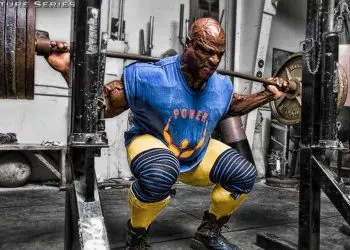Welcome back to Body Mechanics, and thanks for joining me for another edition. Today’s topic will continue on with the trend we have been following in the previous segment, Muscle Imbalances.
Last time we got into the details of what a muscle imbalance is, and how it affects us everyday as well as our training. The body is intended to be symmetrical but, more often than not it is anything but. Many factors contribute to this and today we will focus on assessing these imbalances through a series of screens. We will focus on a few different areas that are vital in diagnosing imbalances.
There are a few different methods to identifying these imbalances, but first and foremost is the static postural assessment. “What is interesting is that the body has a tendency to compensate in particular patterns or by a particular relationship between muscles. These patterns were studied and described by Janda in the early 1970’s.”1 He identified three areas to focus on in order to see how an imbalance affects the body as a whole. His research suggested three different alterations within the body. “The three postural distortion patterns to be assessed during a static postural assessment include the lower crossed syndrome, upper crossed syndrome, and pronation distortion syndrome”2
The lower crossed syndrome refers to the anterior pelvic tilt, which is noticeable because the pelvic region tilts forward and the lower back has an excessive arch. If you recall we discussed this being due to various muscles being tight and short anteriorly, while the posterior muscles are lengthened and weakened. The muscles that become shortened may include gastrocnemius, soleus, hip flexors, and adductors. The muscles that are lengthened may include anterior tibialis, posterior tibialis, and gluteus maximus.
The upper crossed syndrome is the one I used as an example last week to explain to you exactly what a muscle imbalance is. This is diagnosed with a rounding of the shoulders and may also include the head leaning forward. The ankles should be in line with the knees, shoulders, and ears from a side view. Muscles that become shortened may include latissimus dorsi, teres major, and subscapularis. The muscles that are lengthened may include lower trapezius, teres minor, and infraspinatus.
Lastly the pronation distortion syndrome can have a few different areas of focus that may include flat feet, knees tracking inward or outward, perhaps even internal rotation of the leg. The muscles that become shortened may include peroneals, adductors, and iliotibial band. The muscles that are lengthened may include the vastus medialis, gluteus medius/maximus, and hip external rotators.
Level Up Your Fitness: Join our 💪 strong community in Fitness Volt Newsletter. Get daily inspiration, expert-backed workouts, nutrition tips, the latest in strength sports, and the support you need to reach your goals. Subscribe for free!
Static postural assessments are a great tool to utilize in determining a persons needs. However, static assessment are only part of the equation. Movement based assessments are another way to diagnose areas of need before prescribing an exercise routine. These movement assessments can be further broken down into transitional and dynamic assessments. The difference between these two methods is movement without change in one’s base of support. We are going to focus on transitional movements because they are a good indication of which muscle are strong and which muscles are weak. Not to say that dynamic assessments don’t have merit, but they are a little more difficult to diagnose. For today’s purpose our focus will consist of transitional assessments.
The overhead squat is ideal because we are able to see the body function as a whole due to the nature of the movement as a compound exercise. Since the body must work in sync we are able to see were the body deviates from a normal path. Just like the static assessment we will place emphasis on the foot/ankles, knee, lumbo-pelvic-hip complex as well as the shoulders, head and spine.
We will very carefully observe the individual perform the exercise a minimum of five times or as many as needed to get an indication of what’s going on within the body. I don’t want to say “correct”, but the ideal movement will have the individual’s knees track vertically and not inward or outward. The arms will remain over the ears in an upward angle parallel to the lower leg from a side view. The hips and shoulders will also remain parallel to the ground from a front view. Any deviation from this is an indication of overworked muscles.
As with any exercise, this test can be modified to further analyze the screening process. Through process of elimination we are able to pinpoint an area that may be over or under developed. For example by elevating the heels we are able to shift the center of gravity and minimize the involvement of the muscles within the calves. This can play a big role throughout the kinetic chain, as the calves are responsible for plantarflexion at the feet. Any deviation at the feet will transcend up the kinetic chain and alter the recruitment patterns so that there is deviation from the normal path. This is important to note because if the movement is done incorrectly with the feet flat, but correctly with the feet elevated we can determine that the problem occurs within the ankle complex.
Now that we have identified an area of concern the appropriate steps can be taken to correct this issue. Isolation exercise may be necessary at times if the problem occurs to one side. If the problem is bilateral than we can continue to strengthen the ankle complex by targeting a person’s balance and proprioception development. Implementing a stretching protocol that elongates the fibers that are overworked may also prove to be fruitful.
If there is a problem in technique while performing the overhead squat, but when we modify the movement by placing the hands at the hips we can assume that the upper body is affecting how the movement is performed. If there is no change in the movement and it is performed poorly throughout both assessments than we can safely diagnose that there is a problem within the lower extremities more specifically the hip flexors and core stabilizers.
My stance in training has always been to think and implement methods that strengthen the body as one integrated unit. The body is a remarkable piece of machinery and great care must be taken to ensure that it functions at an optimal state. Training hard is necessary for growth and development both physically and mentally. However, the greatest good you can do yourself when it comes to training is to effectively balance the body.
1 – NASM Essentials of Corrective Exercise Training, Michael A. Clark, pg. 98 Para. 5, Lines 1-3
2 – NASM Essentials of Corrective Exercise Training, Michael A. Clark, pg. 99 Para. 1, Lines 4-7
NASM Essentials of Corrective Exercise Training, Michael A. Clark
Happy Lifting!





